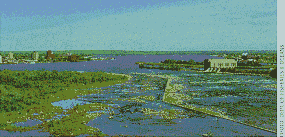 THE
PROBLEM
THE
PROBLEM
Today the St. Marys River produces more parasitic Sea Lampreys than all Great Lakes tributaries combined.
fish and feed on the
fish's body fluids.
Some fish survive a sea
lamprey attack, but
often with life-
threatening wounds.
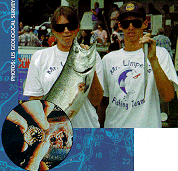
Sea lampreys produced in the St. Marys River migrate into Lake Huron and northern Lake Michigan. There, the adult sea lamprey population is nearly as large as it was 40 years ago-before sea lamprey control-when lake trout and whitefish stocks were decimated.
Sea lampreys attach to fish with a suction cup mouth and rasp through the fish's scales and skin with a sharp tongue. A sea lamprey will destroy up to 40 pounds of fish during the 18 months of its adult life in the lakes.
In Huron and northern Lake Michigan, lampreys prey heavily on many fish species. More fish are destroyed by sea lampreys than all other sources of mortality combined-including natural causes and sport, tribal, and commercial harvest.
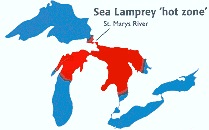
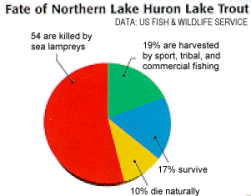
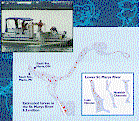
Scientists determine
larval "hot spots"
ASSESSMENT
A deepwater electrofishing device with a vacuum
unit sucks sea lamprey larvae from the bottom of the St. Marys River and
allows scientists to determine density and distribution of the larvae.
With the help of global positioning and mapping technology, larval "hot
spots" are recorded and targeted for control.
CONTROL METHODS
1. Granular Bayluscide: Controlling Sea Lamprey
Larvae.
Using helicopters and global positioning technology,
granular Bayluscide-a lampricide particularly suited for the St. Marys
River-is applied to specific "hot spots to kill sea lamprey larvae on the
bottom of the river.
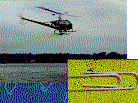
Granular Bayluscide
(above) is applied to
larval "hot spots"

sea lamprey trap
The Great Lakes Fishery Commission entered into partnerships with Great Lakes Power and the U.S. Army Corps of Engineers to construct sea lamprey traps on the St. Marys River. Traps from around the Great Lakes remove spawning sea lampreys and supply males for the sterilization program.

release of sterile males
Male sea lampreys are trapped, sterilized, and released into the St. Marys River. The sterilized males compete as aggressively as normal miles wasting the spawning potential of female sea lampreys. The sterile-male-release-technique reduces sea lamprey spawning success over the long-term.
FISHERIES & OCEANS,
U.S. FISH & WILDLIFE
SERVICE, AND U.S.
GEOLOGICAL SURVEY
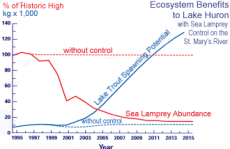 SUCCESS!
SUCCESS!
The health of the Great Lakes fishery depends on sea lamprey control. Sea lamprey control on the St. Marys River will reduce parasitic sea lampreys in Lake Huron and northern Lake Michigan by 85% - a remarkable success!
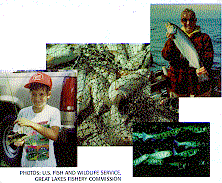
Spawning potential of lake trout and other species is expected to rise dramatically. Furthermore, Lake Huron is a biological crossroads that links the fish diversity stored in Lake Superior to the other lakes. Sea lamprey control on the St. Marys River is vital for the recovery of valuable, rare, native species.
With control, agencies will again stock lake trout in the affected areas. With fewer sea lampreys, more fish will survive to reproduce or to be harvested. Sea lamprey control on the St. Marys River sets the stage to pass on more quality fish and fishing opportunities to future generations.
The Great Lakes Fishery Commission, in cooperation with partner agencies,
carries out this international initiative. Funds have been provided by
the U.S. and Canadian federal governments and by the State of Michigan. 
